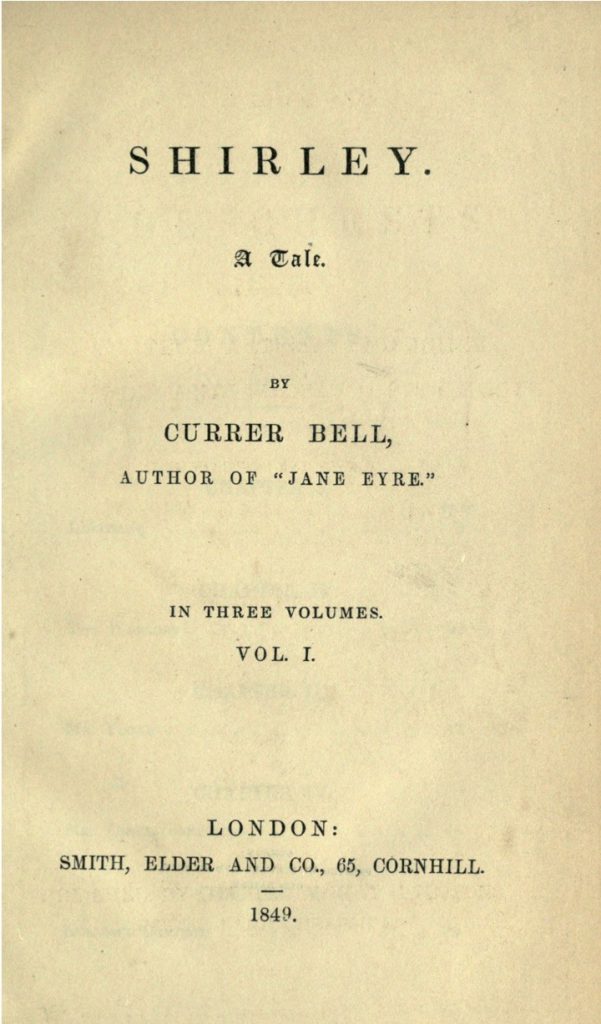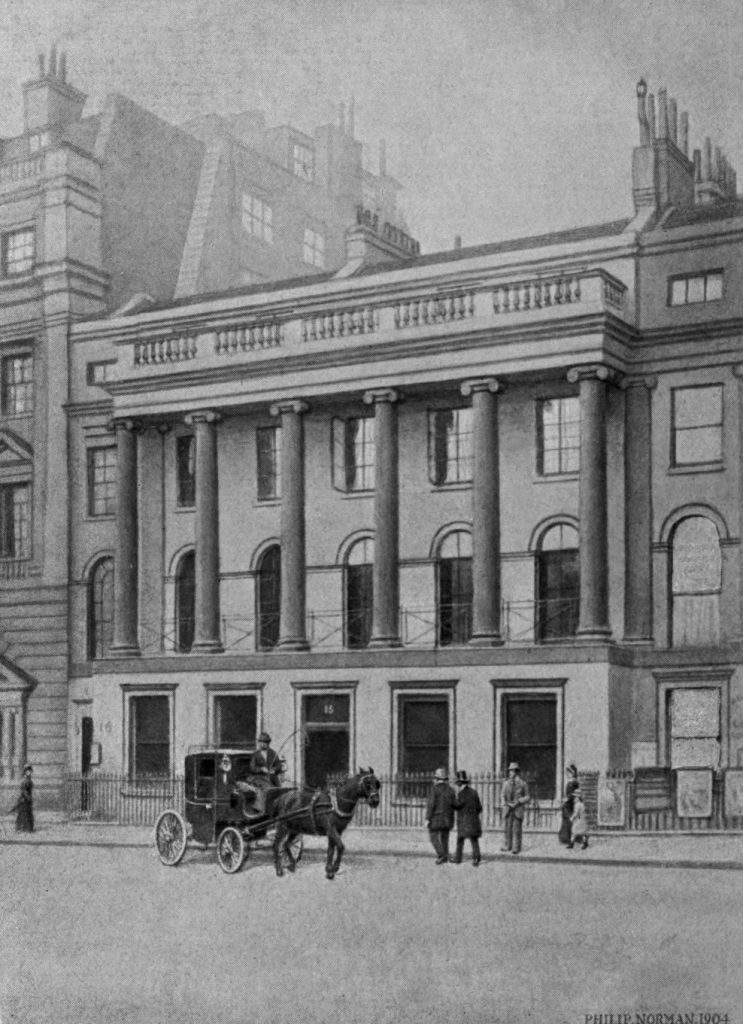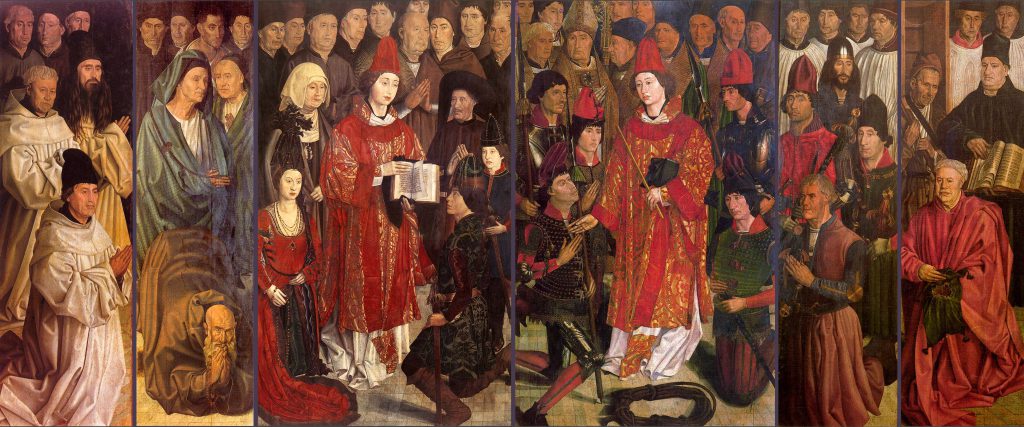Barbara Heritage on Charlotte Brontë’s Fair Copy of “Shirley”
November 18, 2022 in Uncategorized
The Research Group Speaks
Episode 10
Saturday 18 February 2023 online
1:00–2:30 pm EST (GMT-5) by Zoom
“Stages of Composition:
Charlotte Brontë’s Fair-Copy Manuscript for Shirley“
Barbara Heritage

London, National Portrait Gallery, Chalk drawing (1850) of Charlotte Charlotte Brontë (Mrs A.B. Nicholls) by George Richmond (1809-1898). Image Public Domain via Wikimedia Commons.
[Posted on 18 November 2022]
For Episode 10 in the online series of The Research Group Speaks, Barbara Heritage of the Rare Book School at the University of Virginia will talk about her cumulative work on benefits of examining the material evidence for the processes of creation by a major English author in shaping the text for a next novel. Please note that registration is required (see below).
The Subject for the Episode
Barbara will examine aspects of the work — and evidence for work-in-progress — in the writings of Charlotte Brontë (1816–1855) at a significant period in her life, after the successful publication of her first novel and after the deaths of the last of her living siblings. On Charlotte’s life, see, for example, the Oxford Dictionary of National Biography:
The RGME Episode with Barbara Heritage showcases a study of the author at work, based upon material evidence in the structure of the manuscript itself intended for the printing.
Title and Abstract
Stages of Composition:
Charlotte Brontë’s Fair-Copy Manuscript for Shirley
Barbara Heritage
Barbara’s Abstract for her presentation:
On 8 September 1849, James Taylor traveled from London to Haworth, Yorkshire, to collect the manuscript of Charlotte Brontë’s novel, Shirley, for publication. His firm, Smith, Elder and Co., had been anxiously awaiting the completion of the book for nearly a year. Readers both in England and abroad were eager to read the next work by “Currer Bell”, whose first published novel, Jane Eyre (1847), had proved surprisingly popular.
The manuscript, which now resides in the British Library (Add MS 43479), includes numerous excisions to its 896 leaves. Its three volumes have been characterized by some as a confused “text of grief” written during the loss of Brontë’s siblings — and by another as proof of self-censorship and even “symptoms of a writing disorder or disease.” A close codicological study of the manuscript offers an alternative reading by drawing on the correlation of paper stocks and varying pagination, providing new material-based evidence for how Brontë strategically and deliberately revised — and even expanded — her manuscript after serving as the primary caregiver for her siblings.

The First page of the First Edition of ‘Shirley’ by Charlotte Brontë (1849). Image Public Domain via Wikimedia Commons.
Materials, Handwriting & Their Evidence
Some other manuscripts, letters, and other materials produced by Charlotte Brontë are available for viewing online (in full or in part). See, for example:
- Fair copy manuscript of Charlotte Brontë’s Jane Eyre (London, British Library, Add MS 43474-43476)
- Earliest known writings of Charlotte Brontë
- Charlotte Brontë’s journal (Haworth, Brontë Parsonage Museum, Bonnell 98)
- Brontë treasures saved for the nation (from the Blavatnik Honresfield Library)
Barbara’s Publications on Charlotte Brontë and Related Subjects
More of Barbara’s work on the subject and its context appears, for example, here:
- Barbara Heritage, “Stages of Composition: An Analysis of Charlotte Brontë’s Fair-Copy Manuscript of ‘Shirley,’ ” in Studies in Bibliography (2022). (See Studies in Bibliography.) Accepted and forth-coming peer-reviewed article.
- Barbara Heritage and Ruth-Ellen St. Onge, Building the Book from the Ancient World to the Present Day: How Manuscript, Printed, and Digital Texts Are Made. Illustrated from the Teaching Collections of Rare Book School (Ann Arbor, Michigan: The Legacy Press, distributed by the University of Virginia Press, 2022).
— online exhibition viewable as Building the Book from the Ancient World to the Present Day. - Barbara Heritage, “Reading the Writing Desk: Charlotte Brontë’s Instruments and Authorial Craft”, in Romantic Women and their Books, a special issue of Studies in Romanticism, Volume 60, Number 4 (Winter 2021), pp. 503–522 — available here via Project Muse (by subscription). Peer-reviewed article.
- —, “Charlotte Brontë’s ‘Chinese Fac-similes’: A Comparative Approach to Interpreting the Materials of Authorial Labour and Artistic Process”, in Charlotte Brontë, Embodiment and the Material World, edited by Justine Pizzo and Eleanor Houghton. Palgrave Studies in Nineteenth-Century Writing and Culture (Cham, Switzerland: Palgrave Macmillan, 2020), 207–232 — available here by subscription.
- The Scale of Genius: Charlotte Brontë’s Miniature Archive (Middletown, Ohio: Miniature Book Society, 2019). An essay and documentary transcription published in the form of a miniature book.
- —, The Archeology of the Book”, in Charlotte Brontë: The Lost Manuscripts. (Keighley, United Kingdom: The Brontë Society, 2018), 22–69. A commission from the Brontë Society.
- —, Brontë and the Bookmakers: Jane Eyre in the Nineteenth-Century Marketplace (Ph. D. Dissertation, University of Virginia, 2014).
- —, “Authors and Bookmakers: Jane Eyre in the Marketplace,” in The Papers of the Bibliographical Society of America, 106:4 (2012), 449–85 available here by subscription. Peer-reviewed article.
- —, “The Shapes Jane Eyre Takes: Ephemeral Responses to the Book and Its Themes,” RBM: A Journal of Rare Books, Manuscripts, and Cultural Heritage, 9.1 (2008), 58–66. Invited submission.
Worth the visit!
*****

The offices of Smith, Elder & Co. at No. 15 Waterloo Place in London, from The House of Smith Elder (1904) by Philip Norman (1832-1941). Image Public Domain.
*****
Registration for the Episode
Episode 10 in the online series of “The Research Group Speaks” is planned for Saturday 18 February 2023, via Zoom, at 1 pm EST (GMT – 5) for about 1 1/2 hours, with discussion and Q&A. You are welcome to join us.
If you wish to attend, please register here:
If you have questions or issues with the registration process, please contact [email protected].
Future Episodes
Future Episodes are planned. See
Suggestion Box
Please leave your Comments or questions here
, Contact Us, or visit
- our FaceBook Page
- our Twitter Feed (@rgme_mss)
- our Blog on Manuscript Studies and its Contents List
Donations and contributions, in funds or in kind, are welcome and easy to give. See Contributions and Donations.
We look forward to hearing from you.

Lisbon, Museu Nacional de Arte Antiga: The mid 15th-century Saint Vincent Panels, attributed to Nuno Gonçalves. Image (https://upload.wikimedia.org/wikipedia/commons/3/3a/Nuno_Gon%C3%A7alves._Paineis_de_S%C3%A3o_Vicente_de_Fora.jpg) via Creative Commons.
*****
